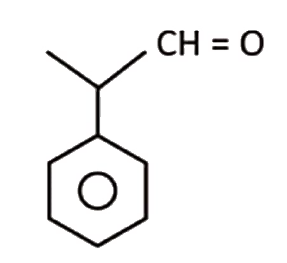PPCl5,0∘C−−−−−→Q(i)NaNH2(excess)−−−−−−−−−−−−−−→−2HCl(ii)H+RNaNH2−−−−→SI−CH3−−−−→T− P is




The correct Answer is:B
To solve the question, we need to identify the compound P based on the series of reactions described. Let's break down the steps involved in the reactions and determine what P could be.
1. Identify the Reaction with PCl5:
- When P is treated with PCl5 at 0°C, it forms Q. PCl5 is known to convert carbonyl compounds into corresponding chlorinated products.
- The product Q is likely a xaminal dichloride, which suggests that P could be a carbonyl compound (like an aldehyde or ketone).
2. Formation of Q:
- The reaction of a carbonyl compound with PCl5 typically results in the formation of a compound with two chlorine atoms attached to the carbon that was originally part of the carbonyl group.
- For example, if P is acetone (CH3COCH3), the reaction with PCl5 would yield a dichloride.
3. Reaction of Q with NaNH2:
- When Q is treated with excess sodium amide (NaNH2), it removes two HCl molecules. This indicates that Q must have at least two chlorine atoms and enough hydrogen atoms to allow for the formation of an alkyne.
- The product after this reaction would be an alkyne (let’s denote it as R).
4. Formation of R:
- The alkyne R is formed by the elimination of HCl from Q. This means that Q must have had two chlorines and at least two hydrogen atoms adjacent to the carbon atoms involved in the triple bond formation.
5. Reaction of R with NaNH2 Again:
- R is then treated with NaNH2 again, which suggests that R has acidic hydrogens that can be removed to form a sodium salt (denote this as S).
6. Formation of S:
- The sodium salt S is formed from R by the removal of acidic hydrogen atoms.
7. Final Reaction with Methyl Iodide (I-CH3):
- Finally, S is treated with methyl iodide (CH3I), which leads to the substitution of the sodium ion with a methyl group, resulting in the final product T.
8. Identifying P:
- After analyzing the reactions, we can conclude that P must be a carbonyl compound that can undergo these transformations. The most suitable candidate based on the reactions is likely to be a ketone or aldehyde that can yield the required products through these steps.
Conclusion:
After evaluating the options and the reactions, we find that the most plausible structure for P is a carbonyl compound that can lead to the formation of a xaminal dichloride, followed by the necessary transformations to yield the final product T.
- When P is treated with PCl5 at 0°C, it forms Q. PCl5 is known to convert carbonyl compounds into corresponding chlorinated products.
- The product Q is likely a xaminal dichloride, which suggests that P could be a carbonyl compound (like an aldehyde or ketone).
- The reaction of a carbonyl compound with PCl5 typically results in the formation of a compound with two chlorine atoms attached to the carbon that was originally part of the carbonyl group.
- For example, if P is acetone (CH3COCH3), the reaction with PCl5 would yield a dichloride.
- When Q is treated with excess sodium amide (NaNH2), it removes two HCl molecules. This indicates that Q must have at least two chlorine atoms and enough hydrogen atoms to allow for the formation of an alkyne.
- The product after this reaction would be an alkyne (let’s denote it as R).
- The alkyne R is formed by the elimination of HCl from Q. This means that Q must have had two chlorines and at least two hydrogen atoms adjacent to the carbon atoms involved in the triple bond formation.
- R is then treated with NaNH2 again, which suggests that R has acidic hydrogens that can be removed to form a sodium salt (denote this as S).
- The sodium salt S is formed from R by the removal of acidic hydrogen atoms.
- Finally, S is treated with methyl iodide (CH3I), which leads to the substitution of the sodium ion with a methyl group, resulting in the final product T.
- After analyzing the reactions, we can conclude that P must be a carbonyl compound that can undergo these transformations. The most suitable candidate based on the reactions is likely to be a ketone or aldehyde that can yield the required products through these steps.
After evaluating the options and the reactions, we find that the most plausible structure for P is a carbonyl compound that can lead to the formation of a xaminal dichloride, followed by the necessary transformations to yield the final product T.
Similar Questions
Knowledge Check
CH3CH2C≡ChNaNH2/NH3(l)−−−−−−−−−−→CH3CH2Br−−−−−−→Li,NH3(l)−−−−−−→
ACH3CH2CH=CH−CH3BCH3CH2CH=CH2C D
D
The correct set of the products obtained in the following reactions
RCNreduction−−−−→(A),RCN(i)CH3MgBr−−−−−−−−→(ii)H2O(B),RNChydrolysis−−−−−→(C),RNH2HNO2−−−→(D)
The answer is :
View SolutionPh−CH∣Cl−CH2−Cl(i)Alc.kOH−−−−−−−−−−→(ii)NaNH2(iii)H+ACold alk.KMnO4−−−−−−−−−→BNaOH−−−−−→warmC
The product 'C' eill be
View SolutionWrite structures of compounds A,B and C in each of the following reactions:
(i) C6H5BrMg/dry ether−−−−−−−→A(a)CO2(g)−−−−−−−→(b)H3O+BPCl5−−→C
(ii) CH3CN(a)SnCl2/HCl−−−−−−−−−→(b)H3O+Adil.NaOH−−−−−→BΔ−−→C
View SolutionACl2−−→BAgCN−−−→C[H]−−→(CH3)2 NH Reactant [ A ] is :
View SolutionCH3−O∣∣C−OHNH3−−→(P)Al2O3−−−→(Q)Br2/KOH−−−−−−→(R). R is
View Solution
(i)NaNH2,NH3(ii)CH3−Br−−−−−−−−−−−−−−−−−−−→(A)(H2 Lindlar'scatalyst)−−−−−−−−−−−−−−→B
View SolutionComplete the following reaction sequence :
CH3−O∣∣C−CH3(i)CH3MgBr−−−−−−−−→(ii)H2O(A)Na metal−−−−→ether(B)CH3−Br−−−−−→(C)
View Solution
